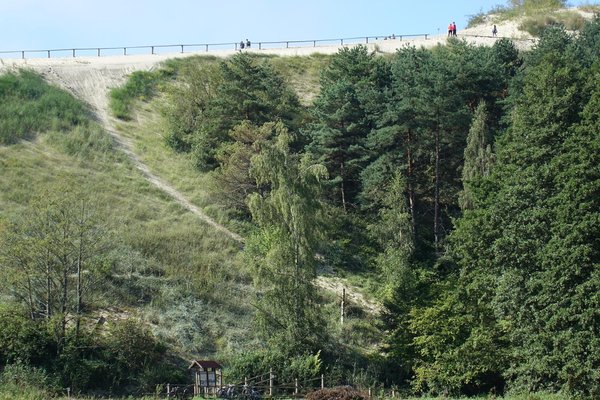Lithuania, Russia
Curonian Spit
The Curonian Spit is a narrow sand dune peninsula, preserved from erosion through human efforts since the 19th century.
After earlier settlements were buried by encroaching sand that came to the surface due to logging, the Great Dune Ridge that shapes this land was reinforced with trees and shrubs to prevent it from moving inland. The peninsula is still home to small Curonian lagoon fishing communities and there are archaeological sites, such as buried villages, to be found.
Community Perspective: most reviewers covered the Lithuanian side: Clyde hiked through the reserve, Jakob did it by bike, and Nan describes the area’s German links. Jarek visited it from the Russian side, which has a pine forest and a bird observation station.
Site Info
Official Information
- Full Name
- Curonian Spit (ID: 994)
- Status
-
Inscribed 2000
Site history
History of Curonian Spit
- 2000: Rejected
- Rejected for natural criteria: 'only' important at the European scale
- 2000: Inscribed
- Inscribed
- Type
- Cultural
- Criteria
- v
Links
- UNESCO
- whc.unesco.org
- Official
-
- visitneringa.com — Tourist info site about the Lithuanian part
- Related
-
- nerija.lt — Kursiu Nerija National Park
All Links
UNESCO.org
- whc.unesco.org — whc.unesco.org/
Official Website
- visitneringa.com — Tourist info site about the Lithuanian part
Related Resources
- nerija.lt — Kursiu Nerija National Park
News Article
- Nov. 4, 2015 globalpost.com — Curonian Spit in debate over visiting fees
Community Information
- Community Category
- Cultural Landscape: Continuing
Travel Information
Recent Connections
-
Located at an 'extreme point' of Latitude or Longitude
The westernmost point of Lithuania is …
-
Viking settlements
"The spit records 5,000 years of occupa…
-
Built in the 19th Century
Criterion V: "massive protection and st…
Connections of Curonian Spit
- Individual People
-
-
Visited by Alexander von Humboldt on his travels
His diary states "...Where we stayed for 4 or 5 days and which yielded 5 shells and 3 lichens".
-
- Geography
-
-
Baltic Sea
-
Located at an 'extreme point' of Latitude or Longitude
The westernmost point of Lithuania is SW of Nida on the Frontier with Russia (Kaliningrad)
-
Peninsula
Occupies a 98 km long sand dune peninsula (AB ev)
-
- Trivia
-
-
Nudist beaches
Smiltyne and Nida -
Built or owned by Germans
Teutonic Order castles and German farmers / settlers -
Depicted in Mizielinska Maps
Dunes in Curonian Spit NP, Pennant in NidaSee i.pinimg.com
-
Minority communities
CuroniansSee en.wikipedia.org
-
- History
-
-
The Crusades
Kaup was destroyed during the Northern Crusades -
Teutonic Knights
The Teutonic Knights occupied the area in the 13th century, building their castles at Memel (1252), Neuhausen (1283), and at Rossitten (1372). -
Historic Resorts
"At the end of that century (19th) more elaborate buildings .. lighthouses, churches, schools, and villas - began to be erected alongside the simpler vernacular houses.This was due in part to the fact that the Spit became a recreational centre: Juodkrante became famous as a health resort as early as 1840 and Nida, Preila, and Pervalka were given official recognition in this category in 1933"... "The most northerly part of the Spit is known as Smiltyne. It was not settled until the mid 19th century, when a healthresort was created."(AB Eval)
-
- Ecology
-
-
Otters
River Otter (nom file) -
Dunes
The Curonian Spit is an outstanding example of a landscape of sand dunes that is under constant threat from natural forces (AB ev) -
Lagoons
The Curonian Spit divides the Curonian Lagoon from the sea. Parts of the lagoon are within the inscribed area.See en.wikipedia.org
-
Bird Migrations
Birds migratory flyway from North Europe to the of South Europe. Rybatschi holds the oldest bird observatory in the world.
-
- Architecture
-
-
Vernacular architecture
-
Gothic Revival
luteran churches in Juodkrante and Nida
-
- Damaged
-
-
Destroyed during invasion
Kaup was destroyed by the Crusades -
Damaged in World War II
"The battles of January 1945 saw considerable destruction of the woodland cover from fire, bombing, and the movementof heavy vehicles. Restoration work began after World War II and has continued with success" (AB eval))
-
- World Heritage Process
-
-
Transboundary sites
-
Cultural sites rejected for Natural criteria
"Concerning natural values, the Committee noted that the Curonian Spit is an important site at the European scale and very significant within the Baltic Region as a whole. However, it was not considered to meet the criteria for inscription on the World Heritage List as a natural property." -
Inscribed on a single criterion only
v. to be an outstanding example of a traditional human settlement, land-use, or sea-use which is representative of a culture (or cultures), or human interaction with the environment especially when it has become vulnerable under the impact of irreversible change
-
- Religion and Belief
-
-
Legends and Folk Myths
Neringa and the creation of the Spit: "According to Baltic mythology, the Curonian Spit was formed by a strong girl, Neringa, who was playing on the seashore."
-
- Human Activity
-
-
Amber
The village of Juodkrante (within the inscribed area) was a major source of amber on an industrial scale. Wiki : - "In 1860 Stantien & Becker company was founded to dig amber just north of the village. During 30 years of operations, it dug out about 2,250,000 kg of amber. During its peak the company employed about 1,000 workers." A significant collection of Amber items from the Neolithic and Bronze ages was put together by a R klebs but in the WWII period much got lost and dispersed. There is an Amber museum at Nida (marked on nomination file map) which contains copies of many of the itmes from the collection. -
Protective engineering works against flooding
-
Art Colonies
Nida -
Viking settlements
"The spit records 5,000 years of occupation, including the Viking-Age when there was a pagan trading settlement called Kaup (likely starting point of the amber road to the south). This was founded in the early 9th century CE as a colony of Birka (archaeology evidences Swedish Vikings, not Danish)." (Viking Age Ring Fortresses Nomination file, p. 207)
-
- Constructions
-
-
Prison
Valley of Death - French prisoners perished due to forced labour at a camp in 1870-1872 -
Lighthouses
Pervalka lighthouse on the small island at the end of the Zirgai Horn (1900); also one in Nida.See www.unc.edu
-
Tumuli
500 tumuli were discovered in Kaup -
Cemeteries
Ethnological Cemetery in Nidda
-
- Timeline
-
-
Built in the 19th Century
Criterion V: "massive protection and stabilization works begun in the 19th century and still continuing to the present day"
-
News
- globalpost.com 11/04/2015
- Curonian Spit in debate over visit…
Recent Visitors
Visitors of Curonian Spit
- AC
- Alexander Barabanov
- Alexander Lehmann
- Aljaz
- A. Mehmet Haksever
- Ammon Watkins
- Argo
- Ask Gudmundsen
- Astraftis
- Atila Ege
- Badwater
- BaziFettehenne
- Bill Maurmann
- Bin
- BJGreasly
- BobSmithseestheworld
- Bodil Ankerly
- Bram de Bruin
- butterflybird
- Carlos Sotelo
- Cezar Grozavu
- Cheryl
- ChrisDorn
- Christer Sundberg
- christof
- Christoph
- Christravelblog
- Claire Bradshaw
- Clyde
- Cody Ayers
- Csaba Nováczky
- ctravel
- CugelVance
- cwthong
- Cyberczar
- David Berlanda
- Dimitar Krastev
- disnsam
- Don Irwin
- Dorejd
- edstar500
- Els Slots
- Eric Lurio
- Erik G
- Erik Jelinek
- Eva Kisgyorgy
- Evgenii
- Farinelli
- Feldhase
- Filippo Ubaldi
- Flexiear
- Gary Arndt
- George Gdanski
- GeorgeIng61
- Harald T.
- Harry Mitsidis
- henrik_hannfors
- Hubert
- Hurrvinek
- Iain Jackson
- Ivan Rucek
- Jakob F.
- Jakubmarin
- Janina Lehmann
- janis
- Janos
- Jan-Willem
- Jarek Pokrzywnicki
- Javier
- Jay T
- Jeanne OGrady
- Jesse S 2010
- Jezza
- JobStopar
- Joel on the Road
- Jonas Kremer
- Jonas Martinsson
- Jon Eshuijs
- jonstst
- JoshHad
- JoStof
- Joyce van Soest
- Juha Sjoeblom
- KarenBMoore
- Karito Vies
- Kbecq
- Kevin247
- Kevin Padley-Knight
- Knut
- Krijn
- Kristin
- Lara Adler
- Lars Bogstad
- Loic Pedras
- Luboang
- Lucio
- Luis Filipe Gaspar
- Maciej Gil
- Marcobrey
- Martina Rúčková
- maryhattie
- Mathijs
- Max
- mg:1
- Michael Novins
- Mikko
- Mikko Syrjä
- Miloš Tašković
- miri2808
- MMM
- nan
- Nasebaer
- Nihal Ege
- PabloNorte
- Patrik
- Patrik_globe
- Paul Schofield
- petar
- Peter Lööv
- Petteri
- Philipp Leu
- Philipp Peterer
- Pink Bunny
- Piotr Wasil
- pressdm
- Rafał Kałczuga
- Randi Thomsen
- Reiseblitz
- Reisedachs
- Reza
- Roger Ourset
- Roman Bruehwiler
- Roman Raab
- Rudegirl
- Sandmann15
- Schnitzel
- Sehnsuchtsbummler
- serghei.belous
- Sergio Arjona
- Shandos Cleaver
- SirLoydd
- Solivagant
- Squiffy
- Stanislaw Warwas
- Stijn
- Svein Elias
- Szabolcs Mosonyi
- Szucs Tamas
- Taotao Chen
- Tarquinio_Superbo
- Tatiana Nikulnikova
- Tcchang0825
- Tevity
- Thanneermalai L
- Thomas Buechler
- Thomas Harold Watson
- Thomas van der Walt
- Timothy C Easton
- Tony H.
- triath
- Tsunami
- usagi1974
- viktor_balandin
- Westwards
- Wojciech Fedoruk
- Wo_ko
- YaroMir
- Zoë Sheng
Community Reviews
Show full reviews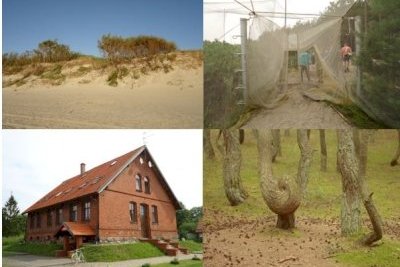
As everybody described Lithuanian part of Curonian Spit I will focus on Russian part of this cultural heritage site. Visited in July, 2019, while it was possible to visit Kaliningrad Oblast (Królewiec Area) without Russian visa.
Access from Polish side - border crossing at Grzechotki / Mamonovo - 2 by own car, and then normal transit via Zelenogradsk towards Curonian Spit National Park (Национальный Парк Куршская Коса). Entrance to the park from Russian side is paid - 150 rubles per person and 300 rubles per vehicle. The point where they collect money is located here 54°58'33.0"N 20°31'13.7"E (Kontrol'no-Propusknoy Punkt Natsional'nogo Parka Kurshskaya Kosa, контрольно-пропускной пункт национального парка Куршская коса). The booth is located some 30 meters from the main road, so if you want to buy the ticket to enter the park, you just stop the car on the road (there is no parking space) blocking the passage. There is always a huge traffic jam before the ticket booth in the morning (the queue usually starts at Zelenogradsk - 2-3 km from the booth).
Russian part is pretty similar to Lithuanian one but for me the villages are far less preserved. First on a way, Lesnoy looks like any other Russian village - many new houses built of white bricks. Rybaczij (Rossiten) is a little bit more similar to German towns (some old buildings are still preserved) but overall impression is somehow disappointing. As far as I remember Lithuanian villages are far more better preserved and maintained.
…
Keep reading 0 comments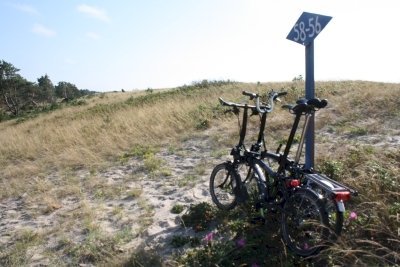
August 2017 - after visiting Latvia, unfortunately just the Western part with Riga. We stayed overnight in a nationalpark Not far from Klaipeda. Next morning we parked our car in Klaipeda, grabbed our folding bikes, took the ferry over and the bus to Nida. The bus took a while and all you could see lot of forests.
Finally we arrived in Nida and had early lunch in one of the cute fishermans houses. Also in Nida we visited the house of Thomas Mann situated on a hill. From there a bikepath back to the ferry would Lead us 50 km north. What an adventure! To allow some stopovers, we had to Pedal quite fast. We drove through wonderful smelling pine forests. Had 2 longer breaks to take a swim in the baltic and took the hike on top of a dune, which is among europes largests. I can recommend to everybody taking the bike. It is a wonderful dayfilling bikeride and the best way to get the essence of this whs.
Keep reading 0 comments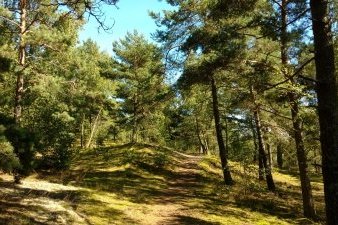
Before World War 2 the Baltics had a substantial German population. Germany proper extended all the way to East Prussia with its capital Königsberg. But many Germans also settled further North in the Baltic states. Indeed, most places in the Baltics also have historic German names (e.g. Reval for Tallinn). And plenty of historic figures were of German ancestry. Take our beloved Struve Arcs. Struve was German and taught at was then a German university in Tartu/Dorpat.
As such, travelling the area you will meet plenty of Germans trying to connect to their ancestors. The Curonian Split features quite heavily in these itineraries as it was a prime travel destination of the locals; and still is.
The Split itself is arguably man made. The Prussians intervened to stabilize the dunes and protect it against the sea. It is this engineering feat for which the site was inscribed. Personally, I enjoyed hiking the woods, the beeches and the dunes, but felt a bit hard pressed to pin point the OUV.
Apart from the beeches Nida nowadays boasts two main attractions:
- The old wooden tourist houses in the city center. The most prominent one used to belong to Thomas Mann.
- The big Parnidis dune South of the city.
Getting There and Around
Thanks to Air Baltic plenty of locations in the Baltics are within reach and budget. Only caveat is that you will have to transfer at Riga. I flew via …
Keep reading 0 comments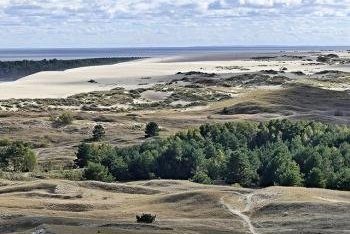
I visited this WHS in August 2016. I based myself in Nida for 2 nights just opposite the Horn of Bulvikis, the widest point of the spit (3.8km). Just next to my timber guesthouse serving delicious savoury blinis for breakfast, there was a pyramid marble structure with the UNESCO inscription plaque engraved on it. From there I followed the 1.7km Parnidis self-guided path in the Neringa National Park. The highest point of this path is the 52m Parnidis Dune and sundial. The panoramic view of Nida and the rest of the Curonian Spit from there is beautiful especially at sunset and sunrise (when no tour buses are around). Since I had more time to spend, I decided to hike towards the protected nature reserve with several shrubs, flowers, plants and trees growing on the sand dunes. The landscape is quite surreal there and the peace and quiet priceless. Small passerine birds and sea birds thrive on this undisturbed stretch of the spit. There are fenced off areas towards the forests to prevent direct access to the Russian border, however if you carry enough water and keep on walking along the dunes closest to the lagoon there is a clear path which will actually lead you to the Russian part of the Curonian Spit. I walked at least 10km as the sundial and viewpoint were not visible any longer and I could clearly see the Baltic sea on the Russian side. Suddenly, as I caught sight of a Russian watchtower, I …
Keep reading 0 comments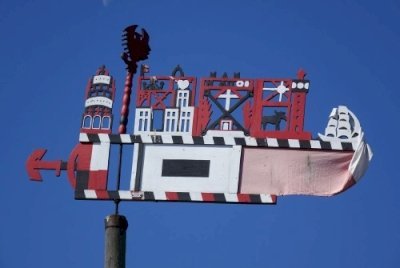
The Curonian Spit always has been a bit of an enigma to me. Who were these Curonians? And what is a Spit anyway? The Dutch translation (‘Schoorwal’) did not really help me as it is also a very uncommon word, used primarily to address the Curonian Spit. So I was happy that we decided to have our WH meeting in Vilnius this year: with a few extra days I could check out this WHS too. I stayed for two nights in Klaipéda, the easiest access point to the Lithuanian part of the Curonian Spit.
Besides its name, another part of the site’s mystery is why it was designated a WHS. It was put forward under 7 natural and cultural criteria. But in the end, it was only recognized for one: the efforts, started by the Prussians in the 19th century and continued by the Lithuanian and Russian authorities after WWII, to save this sand dune peninsula from erosion. Constantly moving sand dunes even had made whole villages disappear. Large-scale (re)afforestation was started to keep the sand in place.
Forest still is one of its main features: my first impression of the peninsula was driving by bus from Smitylne to Nida. Especially the first half-hour or so goes on a narrow road through a dense forest. The Lithuanian road ends after 50km in the town of Nida, close to the Russian border which unfortunately cannot be crossed easily (one needs a Russian visa and a mode of transport). Nida …
Keep reading 0 comments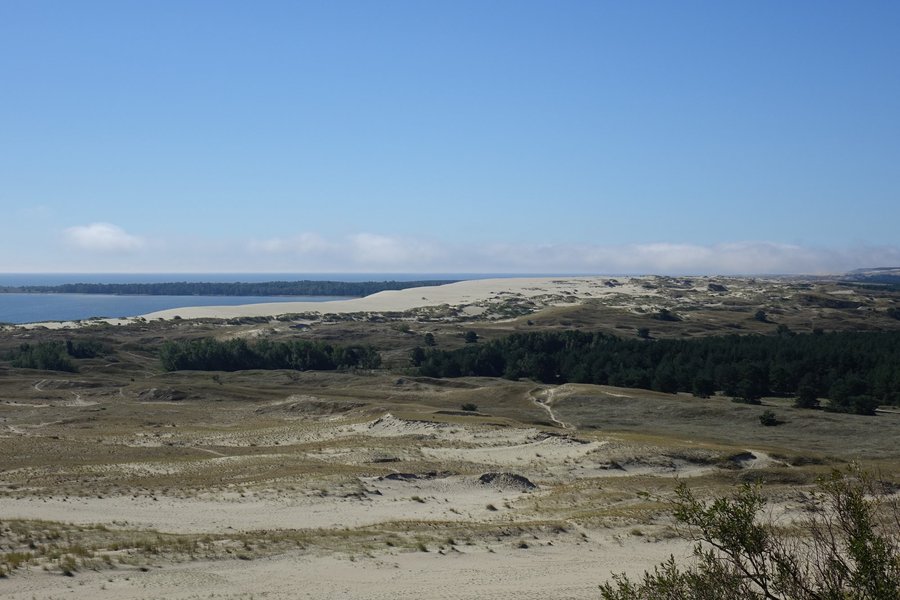
I am married to a Lithuanian lady ,we go there regually to visit her family. On one such visit we holidayed in Nida on the Curonian Spit.As an Englishman I have never seen the like in England.You sit down for breakfast in a modernish restaurant then take a walk for about a mile and you have gone back 200 years in time. For me the most peaceful and tranquil place on earth.
Keep reading 0 comments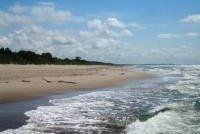
The Coronian Spit is a 100 km long and 1-4 km wide sand dune peninsula in the south-east of the Baltic Sea, shared between Lithuania and the Russian enclave of Kaliningrad. On the western side of the peninsula you face the Baltic Sea and on the east side - the “inside” – there is a large lagoon. Just where the tip of the spit forms a narrow sound against the land, Klaipeda, Lithuanias major port is located. Or “Memel” as the town was known up until the end of WWII when then the population was predominantly German. Today it is 100% Lithuanian.
I arrived to Klaipeda on a bright summer day, after having crossed the Baltic Sea from Sweden on a pleasant overnight cruise. Klaipeda was badly damaged during WWII but still have enough old buildings and charm to be a major tourist destination. Later jumping across the sound between Klaipeda to the Spit takes about 10 minutes with a small ferry that runs back and forth all day. On the Spit, buses are running up and down and 45 minutes later I found myself in the small village of Nida, close to the Russian border. It is in Nida you will find the famous Paradise Dunes, massive sand dunes which equals you probably have to go to Sahara to find.
Walking on the sea side of the Coronian Spit was a peculiar experience. The sun was shining from a hot, clear blue summer sky and yet there was not …
Keep reading 0 comments
